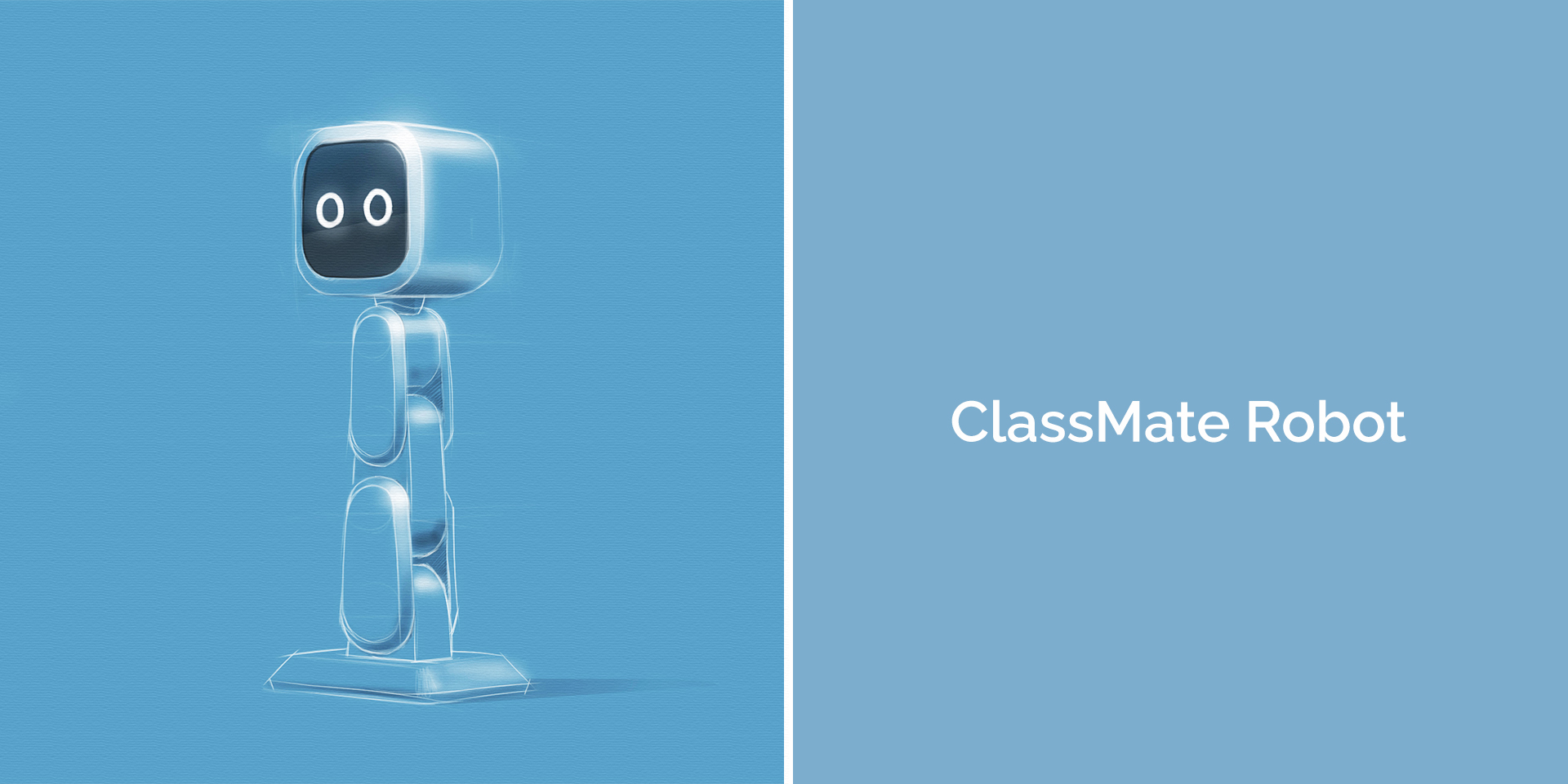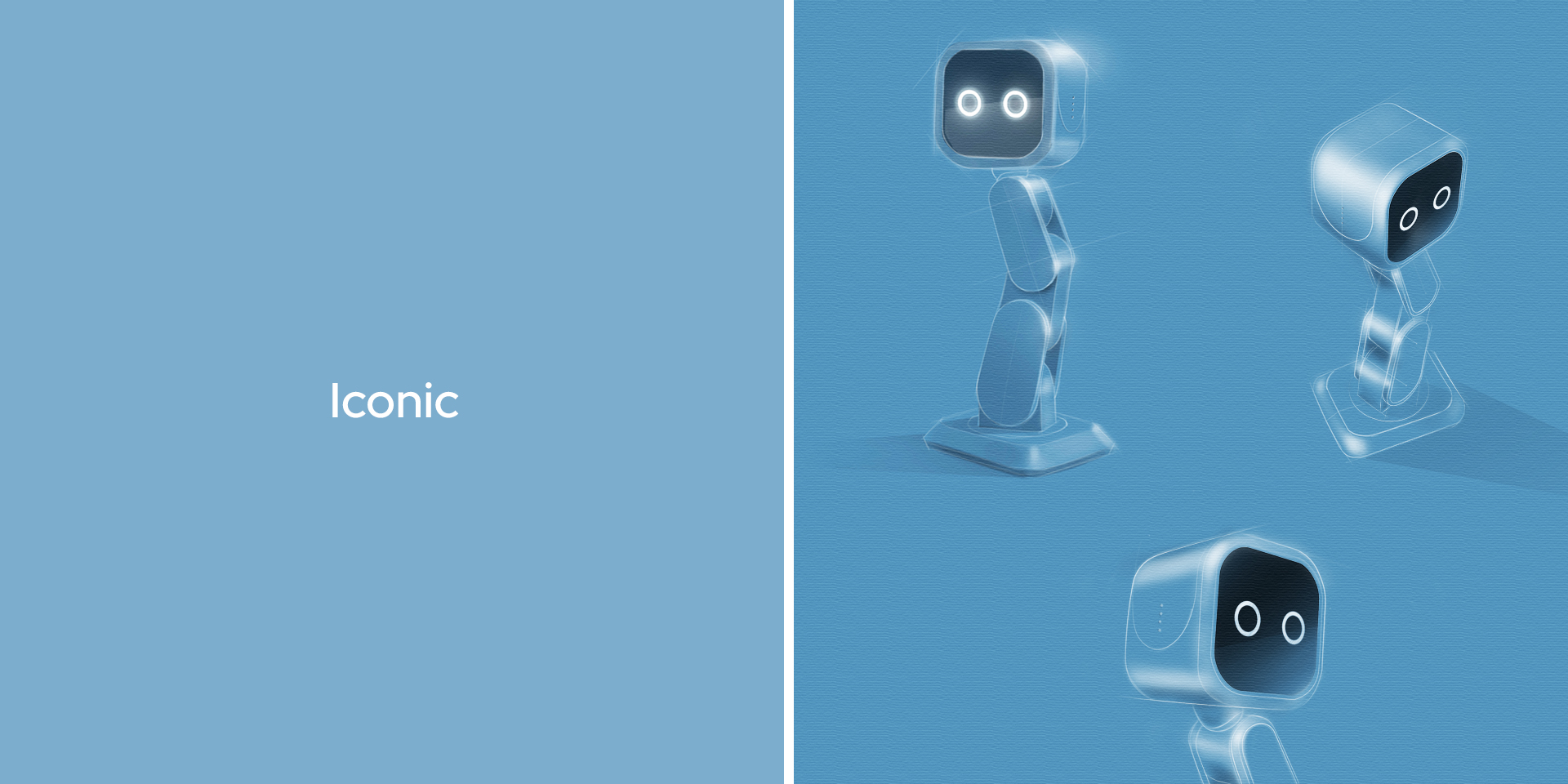Nowadays, Artificial Intelligence is commonplace and has become part of our daily lives, though the presence of robots in classrooms is not yet a routinely sight. “So far, many of us have had encounters with humanoid robots, and beyond the initial wonder the experience didn’t leave much of a lasting memory. This probably because in the end it came down to greetings and some embryonic conversation. Instead, we took a reverse approach: we considered an exciting environment such as that of a classroom, and asked our potential audiences, teachers and pupils, what they wished a robot did in that context, then we created it.” says Salvatore Rionero, CEO of Protom, the dynamic KTI (Knowledge/Technology Intensive) company from the Naples area in Italy, leading this unique educational project in collaboration with Naples’ Federico II University.

Studio Volpi was involved in the ClassMate Robot project at an advanced stage. The Studio’s task was to give a form to existing function, since the robot had already been created, with all its artificial intelligence and functionalities. In other words, it needed a body, but not just any body.

Humanoid, but not too much
The idea that this robot would be joining normal classrooms as just another classmate, albeit special and very, very smart, called for a humanoid appearance. Also, interacting with teachers ad fellow pupils is easier and more engaging when one looks at least remotely like a human being. However, too realistic an appearance could be a disturbing element, a distraction from the original intent of creating an engaging and lovable learning companion.

The Studio’s designers had to strike the right balance between realism and imagination, objectivity and emotions. Of course the body of the robot also had to perfectly serve its physical motion capabilities, and comply with a number of other technical requirements. Going beyond the scientific dimension of the project, the brief even evoked aesthetics when it came to the robot’s appearance: typically a matter of taste, judgment and emotions! As in the purest classic Italian tradition, beauty had to go hand in hand with knowledge and leading-edge technology.

Cute, cool, likeable, iconic
Designers at the Studio were provided with videos showing the robot in motion, to have a precise idea of the moves it needed to perform and a first impression of its general demeanour. Necessary steps to confer it a fitting personality. They started by “putting flesh” around the joints, making sure the robot could move easily and efficiently, then adding a face, or impression of it, in the monitor area.

The face of the robot, like in human beings, is possibly the most important part of one’s body where others “read” personality, emotions and state of mind. The idea was not to make it morphologically realistic, but to interpret it as an “icon” of a human face, engaging, likeable and cute. Kids are used to this kind of transposition, and are very familiar with icons which are literally everywhere in their connected world.
From there, the rest of the body almost revealed itself naturally. Proportions were inspired by cub-like limbs and torso, as in cartoons, contributing to the reassuring sense of cuteness and lovability, with just that hint of mischievous naughtiness to make it “cool” for its future classmates.

New kid on the block
ClassMate Robot is thus ready to start school and interact with its new chums in the secondary schools it might soon be joining. Its present form, and more specifically its functionalities, are the result of a pilot project led by the Department of Social Sciences of Naples’ Federico II University. Teachers and students from 5 schools in different parts of Italy took part in the project, with the aim of precisely defining what was expected of the robot. This constituted the starting point for the development of the software and mechanical functionalities of ClassMate. It was a truly multidisciplinary exercise, with the participation of mechanical, electronic and software engineers, social scientists, designers, psychologists and education specialists. The project validated the use of the robot in some real classroom contexts, and even in schools situated in particularly disadvantaged communities.

Part teacher, part pupil, part admin, wholly everyone’s pal
ClassMate Robot can interact with pupils in a classroom, helping teachers deliver the classes, also assisting in classroom Q&A. Pupils can treat it as one of them, asking it questions on any subject. Its facial recognition capabilities also make it a valuable assistant for the school’s admins, always keeping track of who’s in class. It can help those students who can’t come to school by recording lessons and then playing them back to them in some digital form, or by “impersonating” the absent student, connected from home. ClassMate Robot can act as the digital interface though which different schools can connect and interact in real time.

The future of education
ClassMate Robot represents “an extraordinary convergence of knowledge to offer new services” adds Rionero, “we are confident it can spark a virtuous process leading to a more inclusive and engaging school system. For sure it will have a disruptive impact on the future of education.”
On its part, Studio Volpi is glad to have moved its first steps in the world of academia with such a meaningful and exciting project, and has certainly gained some valuable insight in both the educational sphere and that of advanced robotics.







